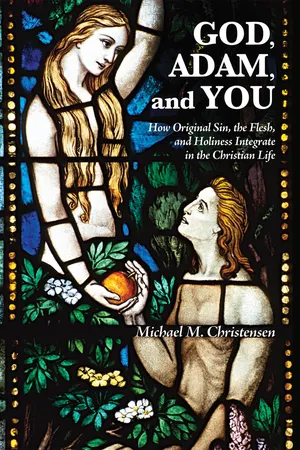![]()
1
Ingredients in the Theological Stew
Opinions from Jewish and Christian History
Definitions
It is a wise person who learns from the past, and as the saying goes, if we don’t learn from it, we are doomed to repeat the negative parts of it. Heeding this warning, we now turn to what theological history has to tell us about human nature, sin, holiness, and God’s holiness expectations for his people. Israel and the church were blessed with great thinkers who contributed significantly to our understanding on these topics and who help us when setting a foundation for the building of a Christian theology.
Judaism
Although Christian history sometimes begins with Jesus and the twelve disciples, by the first century there already existed a foundation of Jewish thought on the nature of humanity and holiness. Besides the Torah and the rest of the Hebrew Bible, oral laws developed over the long history of Israel, which were eventually written down near the year 200 AD in a document called the Mishnah. Later, further contributions, the Tosefta, and commentaries on both of them, Gemara, were added. Altogether, these documents were called the Talmud. Another source of information about Jewish beliefs comes from Jewish rabbis. After the overthrow of Jerusalem and the destruction of the temple in 70 AD, rabbinic schools of thought developed, in which the rabbis wrote in-depth commentaries (midrashim) on many of the books of the Hebrew Bible. The oldest copies available today date from the second century through the seventh century AD. Other documents of that era, called the apocrypha and pseudepigrapha, discuss human nature, but were never generally accepted as canonical by either Jewish or Christian scholars, and because of this they are not considered in this book.
Craig Blomberg believes that if we have evidence that a Jewish belief or tradition was discussed by the rabbis during the first three centuries AD, such tradition could very well have existed during the time of Christ and been an influence on the writers of the NT. Even if these traditions developed later, they still helped shape the rabbinic and general Jewish view of human nature and holiness that has come to exist today. Solomon Schechter sees general agreement among the rabbis, even when looking at the large time frame of the second through tenth centuries and considering the scarcity of documents. The doctrinal teachings of the second century Palestinian rabbis are largely in agreement with Babylonian rabbis, R. Ashi of the fifth century and R. Sherira of the tenth. Schechter remarks that even though the rabbis were in general agreement, they unfortunately had no compunction to apply theological or logical principles to their conclusions or to seek logical consistency. Therefore it is difficult to compile a systematic rabbinic theology. Schechter therefore cautions the reader to not press rabbinical writings too much in order to “fill them with meaning” that the author never intended them to have. Schechter’s distillation of the Jewish view of sin is in close agreement with the ideas expressed by the well-known writer on Judaism, G. F. Moore, whose research we discuss next.
Moore narrowed his focus on Judaism to the age of the Tannaim (the first three centuries of the Christian era), and pertinent to this book, discussed Jewish views on sin and holiness. He notes the fact that all humanity had sinned was the testimony of Scripture and experience. According to the rabbis, universal sin was due to every person having a conflict with an evil impulse. Moreover, when this impulse is repeatedly yielded to it becomes a habit and exerts a growing power over the sinner. Small sins can lead to larger ones for those who are reckless, just as a spider’s silk may grow as thick as a cart rope. The rabbis acknowledge that sin began with Adam and that his sin led to the deaths of all the generations of his descendants. The idea of the solidarity of families, clans, and nations was familiar to the Jews and they saw no injustice in God’s death punishment. Although this is true, individual responsibility for sin is also a hallmark of Judaism. In an ancient Midrash the righteous dead reproach Adam for causing their deaths, but he responds that he was guilty of only one sin, but they of many. Every person deserves death and they do not die because of the guilt of Adam’s sin. Judaism affirms the tempter Satan draws or influences people toward sin. Satan, as the serpent, appealed to Adam and Eve’s desires and ambitions that were already inherent in them before they sinned. Therefore, Adam and Eve’s sins were like those of any other person who follows the leadings of their human nature. In fact, Adam was mentally and morally alike to his posterity. Moore remarks that in Judaism “there is no notion that the original constitution of Adam underwent any change in consequence of the fall, so that he transmitted to his descendants a vitiated nature in which the appetites and passions necessarily prevail over reason and virtue, while the will to good is enfeebled or wholly impotent.” N. P. Williams agrees, affirming that the theory of the fall and original sin does not rest on anything found in Genesis 3:
